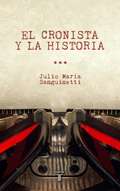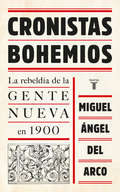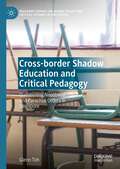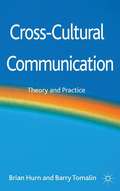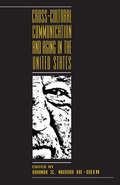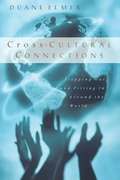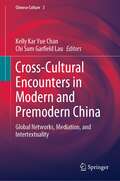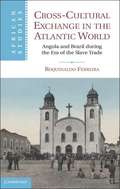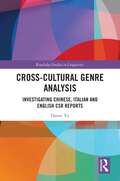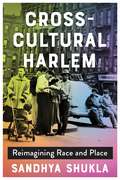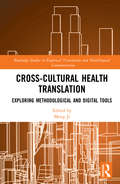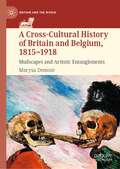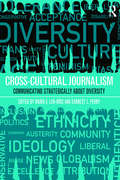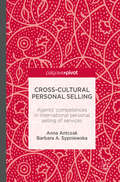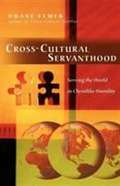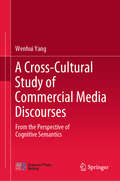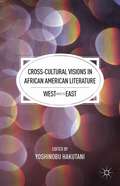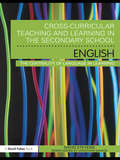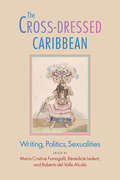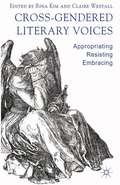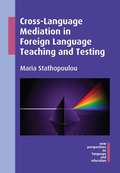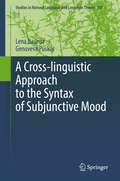- Table View
- List View
El cronista y la historia
by Julio María SanguinettiEste libro compila la trayectoria de Julio María Sanguinetti en su rol de periodista, durante más de sesenta años de trabajo. ¿Cómo se veía Cuba en 1959 cuando Fidel asumía personalmente el gobierno? ¿Y Checoslovaquia al borde de la invasión de 1968? ¿Y la Corea del Norte de Kim Il Sung, hoy considerado divinidad por su nieto?Julio María Sanguinetti, en su rol de periodista, estuvo en esos lugares, en aquel tiempo lejano, y escribió crónicas que hoy son historia. También lo son las que publicó en el momento mismo del golpe de Estado uruguayo, en 1973, que no vieron nunca la luz en Uruguay y que fueran publicadas en Argentina, México y también Brasil, donde sufrió la proscripción para escribir de asuntos políticos, tal como le ocurriría luego en nuestro país.En sesenta años de periodismo no ha cesado de mantener su mirada histórica, a través de artículos generalmente # de combate #, referidos al abuso de la memoria, la politización de la historia, la leyenda del # Estado tapón #, la denigración de Rivera, los equívocos en nuestra celebración de la independencia, la laicidad republicana y otros temas que no son pasado congelado sino historia viva.Como dice Marc Bloch, fundador de la historiografía moderna, # la incomprensión del presente nace fatalmente de la ignorancia del pasado #.
Cronistas bohemios: La rebeldía de la Gente Nueva en 1900
by Miguel Angel del ArcoEl retrato de una época legendaria para la esfera intelectual española y el sector del periodismo, a través de cinco de sus protagonistas. Alrededor de 1900 las redacciones de los periódicos estaban repletas de bohemios que acudían allí para calentarse o para demandar una colaboración. Pero no todos eran hampones y pedigüeños. Entre ellos había literatos de altura que pasaron a la historia como la Gente Nueva y fueron coetáneos, compañeros de café y colegas de modernistas y noventayochistas. Algunos de ellos fueron auténticos pioneros, los primeros corresponsales, cronistas y reporteros, y conformaron los inicios del periodismo moderno. Además de una magnífica contextualización histórica y la descripción de las relaciones entre el periodismo y bohemia de aquel tiempo, Cronistas bohemios reúne algunos de los mejores textos -precedidos de un perfil de cada autor-, excelente muestra de las grandes aportaciones de esta bohemia a la historia del periodismo, esencialmente en el lenguaje (basado en la paradoja y el uso de la palabra como explosivo), el contenido (de calado social) y el humor(a menudo ácido, incluso negro). Los cinco autores aquí reunidos son Antonio Palomero, Alejandro Sawa, Pedro Barrantes, Joaquín Dicenta y Luis Bonafoux, nombres que hoy no representan gran cosa. Sin embargo, estos textos tienen muy poco que envidiar, en calidad, en estilo, en atrevimiento y en novedoso enfoque, a lo que muchos años después conoceríamos como nuevo periodismo. Se pueden leer, hoy mismo, con gusto y asombro. Reseñas:«Además de una magnífica contextualización histórica y la descripción de las relaciones entre periodismo y bohemia de aquel tiempo, Cronistas bohemios reúne algunos de los mejores textos, precedidos de un perfil de cada autor, excelente muestra de las grandes aportaciones de esta bohemia a la historia del periodismo, esencialmente en el lenguaje (basado en la paradoja y el uso de la palabra como explosivo), el contenido (de calado social) y el humor (a menudo ácido, incluso negro).»Todo Literatura «No dejaron huella aparente en el oficio. La Guerra Civil partió en dos el rastro de aquellos hombres en beneficio de una amnesia triunfal que borró su estela. Pero de esos días delirantes quedan sus crónicas y el peso de leyenda que los enclavijó en la bohemia cuando en verdad fueron algo más. En un entorno de sacamantecas, feriantes de café y colmeneros del hambre y la cazalla, dibujaron un periodismo de buen paño que se levantó en los periódicos, en las redacciones de vinagre y ruido, en el fervor de un Madrid sacudido de miseria y sediento de honor, síntomas de una época tremenda y feliz. De una forma de hacer periódicos con el ideal puesto en el último café que cierra más allá de la madrugada.»Antonio Lucas, El Mundo
Crooked Talk: Five Hundred Years of the Language of Crime
by Jonathon GreenThe language of crime has a long and venerable history - in fact, the first collection of words specifically used by criminals, Hye-Way to the Spittel House, dates from as early as 1531. Jonathon Green is our national expert on slang, and in Crooked Talk he looks at five hundred years of crooks and conmen - from the hedge-creepers and counterfeit cranks of the sixteenth century to the blaggers and burners of the twenty-first - as well as the swag, the hideouts, the getaway vehicles and the 'tools of the trade'. Not to mention a substantial detour into the world of prisons that faced those unlucky enough to be caught by the boys in blue. If you have ever wondered when the police were first referred to as pigs, why prison guards became known as redraws, or what precisely the subtle art of dipology involves, then this book has all the answers.
The Cross: History, Art, and Controversy
by Robin M. JensenThe cross stirs intense feelings among Christians and non-Christians alike. Robin Jensen takes readers on an intellectual and spiritual journey through the 2,000-year evolution of the cross as idea and artifact, illuminating the controversies and forms of devotion this central symbol of Christianity inspires.
Cross-border Shadow Education and Critical Pedagogy: Questioning Neoliberal and Parochial Orders in Singapore (Palgrave Studies on Global Policy and Critical Futures in Education)
by Glenn TohThis book explores critical pedagogy and issues relating to entrepreneurialism, commodification, and marketization in education, and their deleterious effects on student agency and subjectivity. The central theme of the book is a cross-border critical ethnographic study of the shadow education practices of an overseas Japanese business community in Singapore which draws attention to the elaborate extent to which families are engaged in shadow or cram tutoring practices as part of their children’s education, supported by the strong presence of overseas branches of well-established corporate tutoring businesses headquartered in Japan. The author ultimately critiques a banking approach to education, particularly in terms of its oppressive and dehumanizing outcomes, sustained by the inner workings of neoliberal forces and mercantilist ideologies.
Cross-Cultural Communication
by Brian J. Hurn Barry TomalinA comprehensive survey of the key areas of research in cross-cultural communication, based on the authors' experience in organizing and delivering courses for undergraduate and postgraduate students and in business training in the UK and overseas.
Cross-cultural Communication and Aging in the United States (Routledge Communication Series)
by Hana S. Noor Al-Deen Jennings BryantRecently, the communication discipline has devoted increasing energy toward the study of aging, yet most of the research has insufficiently addressed a crucial factor in communicative relationships--culture. Meanwhile, cross-cultural/intercultural communication has not adequately addressed the aging process. Combining three powerful elements--communication, aging, and culture--all of which have an increasingly profound impact on today's multicultural society, this book focuses on older Americans in various communicative contexts within the framework of their cultures. Composed of original research by experts in their respective fields, the book combines communication, aging, and culture for a unique examination of those elements in American society. Section 1 deals with perspectives in cross-cultural communication and aging. These perspectives both illustrate the issues that greatly affect the lives of our elders and suggest ways to improve their status. Section 2 showcases three American co-cultures: Hawaiian, Arab, and Mormon illustrate how language, attitudes, and mentoring can serve as the links for maintaining cross-generational continuity in multicultural society. Section 3 demonstrates that many American organizations frequently contribute to the hardships that both internal elder customers (employees) and external elder customers (residents and patients) must endure. Section 4 incorporates popular culture and aging. It presents the role of selective popular media in portraying our elders. Because Americans rely heavily on the media, their mediated perceptions can have a profound impact on their attitudes toward the older population. Designed as a reader or supplementary text for college students in communication, gerontology, anthropology, sociology, and other related fields, this text can also be used by professionals in gerontological service areas, by libraries, and as a personal reference. It offers extensive appendices, figures, and tables for additional reference.
Cross-Cultural Connections: Stepping Out and Fitting In Around the World
by Duane H. ElmerThis book intends to help the reader become aware of the realities in making a cultural transition--in business, in short- or long-term missions, as a bivocational person.
Cross-Cultural Connections in Crime Fictions
by Vivien Miller Helen OakleyA collection of ten original essays forging new interdisciplinary connections between crime fiction and film, encompassing British, Swedish, American and Canadian contexts. The authors explore representations of race, gender, sexuality and memory, and challenge traditional categorisations of academic and professional crime writing.
Cross-Cultural Encounters in Modern and Premodern China: Global Networks, Mediation, and Intertextuality (Chinese Culture #3)
by Kelly Kar Yue Chan Chi Sum Garfield LauThis book presents an essential contribution to approaches in the studies of film, literature, performance, translation, and other art forms within the Chinese cultural tradition, examining East-West cultural exchange and providing related intertextual dialogue. The assessment of cultural exchange in the East-West context involves the original source, the adapted text, and other enigmatic extras incurred during the process. It aims to evaluate the linkage among, but not limited to, literature, film, music, art, and performance. The sections unpack how canonical texts can be read anew in modern society; how ideas can be circulated around the world based on translation, adaptation, and reinvention; and how the global networks of circulation can facilitate cultural interaction and intervention. The authors engage discussions on longstanding debates and controversies relating to Chinese literature as world literature; reconciliations of cultural identity under the contemporary waves of globalization and glocalization; Chinese-Western film adaptations and their impact upon cinematic experiences; an understanding of gendered roles and voices under the social gaze; and the translation of texts from intertextual angles. An enriching intellectual, intertextual resource for researchers and students enthusiastic about the adaptation and transformation process of different genres, this book is a must-have for Sinophiles. It will appeal to world historians interested in the global networks of connectivity, scholars researching cultural life in East Asia, and China specialists interested in cultural studies, translation, and film, media and literary studies.
Cross-Cultural Exchange in the Atlantic World
by Roquinaldo FerreiraThis book argues that Angola and Brazil were connected, not separated, by the Atlantic Ocean. Roquinaldo Ferreira focuses on the cultural, religious, and social impacts of the slave trade on Angola. Reconstructing biographies of Africans and merchants, he demonstrates how cross-cultural trade, identity formation, religious ties, and resistance to slaving were central to the formation of the Atlantic world. By adding to our knowledge of the slaving process, the book powerfully illustrates how Atlantic slaving transformed key African institutions, such as local regimes of forced labor that predated and coexisted with Atlantic slaving, and made them fundamental features of the Atlantic world's social fabric.
Cross-cultural Genre Analysis: Investigating Chinese, Italian and English CSR reports (Routledge Studies in Linguistics)
by Danni YuThis unique monograph provides a theoretical and methodological account on how to do cross-cultural genre analysis with the aids of corpus tools. Cross-cultural genre analysis investigates how discourse communities from different cultural backgrounds use language to realize a particular genre. It can shed light on genre nature as well as cultural specificities. The book suggests five specific approaches in doing cross-cultural genre analysis: Investigating genre context; Approaching genre complexity; Exploring genre nature; Exploring culture specificity; and Focusing on specific communicative functions. Each of these approaches is illustrated and demonstrated in a specific chapter with practical analyses of the genre of CSR reports. Covering linguistic analysis of CSR reports in three languages: Chinese, English and Italian, Yu provides insights into implications for both genre theories and CSR communication practice. By applying the cross-cultural perspective in corporate discourse analysis, her book demonstrates how the approach of cross-cultural genre analysis is fruitful and valuable in providing practical insights into the textual practice of CSR reporting in a globalized context. Moreover, in the final parts of the book, Yu illustrates how cross-cultural genre analysis can be applied in the didactic field of writing, translation and cross-cultural studies. This volume is a valuable reference to scholars of genre analysis, corpus-based studies, cross-cultural studies and corporate communication. Moreover, it is also useful for professionals involved in compiling CSR reports. Armed with the knowledge imparted in this book, the reader should be able to analyze other genres from a cross-cultural perspective. In particular, instructions on how to use specific corpus tools are provided in the appendices, which can give scholars basic technical knowledge to approach the field of cross-cultural genre analysis.
Cross-Cultural Harlem: Reimagining Race and Place
by Sandhya ShuklaOver the course of the twentieth and twenty-first centuries, Harlem has been the capital of both Black America and a global African diaspora, an early home for Italian and Jewish immigrant communities, an important Puerto Rican neighborhood, and a representative site of gentrification. How do we understand the power of a place with so many claims and identifications? Drawing on fiction, sociology, political speech, autobiography, and performance, Sandhya Shukla develops a living theory of Harlem, in which peoples of different backgrounds collide, interact, and borrow from each other, even while Blackness remains crucial.Cross-Cultural Harlem reveals a dynamic of exchange that provokes a rethinking of spaces such as Black Harlem, El Barrio, and Italian Harlem. Cross-cultural encounters among African Americans, West Indians, Puerto Ricans, Jews, and Italians provide a story of multiplicity that challenges the framework of territorial enclaves. Shukla illuminates the historical processes that have shaped the diversity of Harlem, examining the many dimensions of its Blackness—Southern, African, Caribbean, Puerto Rican, and more—as well as how white ethnicities have been constructed. Considering literary and historical examples such as Langston Hughes’s short story “Spanish Blood,” the career of the Italian American left-wing Harlem congressman Vito Marcantonio, and the autobiography of Puerto Rican–Cuban writer Piri Thomas, Shukla argues that cosmopolitanism and racial belonging need not be seen as contradictory. Cross-Cultural Harlem offers a vision of sustained dialogue to respond to the challenges of urban transformations and to affirm the future of Harlem as actual place and global symbol.
Cross-Cultural Health Translation: Exploring Methodological and Digital Tools (Routledge Studies in Empirical Translation and Multilingual Communication)
by Meng JiHealth translation represents a critical yet underexplored research field in Translation Studies. High-quality health translation represents an integral part in the development of multicultural health resources. The empirical study and evaluation of health translations, and the establishment of effective health translation methods and models, holds the key to the success of multicultural health communication and promotion. Chapters in this book aim to fill in a persistent knowledge gap in current multicultural health research, that is, culturally effective and user-oriented healthcare translation. Research presented in this book points to an important opportunity to improve and enhance current multicultural healthcare services based on empirical, evidence-based health translation studies. Health translation provides a powerful intervention tool to engage with migrants with diverse language, cultural backgrounds and health literacy levels. This book provides much-needed reading in the emerging research field of healthcare translation. It makes useful and original contributions to this emerging research field through the exploration of culturally effective health translation methods, approaches and models, as well as the development and evaluation of digital health translation resources and tools.
A Cross-Cultural History of Britain and Belgium, 1815–1918: Mudscapes and Artistic Entanglements (Britain and the World)
by Marysa DemoorThis book highlights the ways in which Britain and Belgium became culturally entangled as a result of their interaction in the period between the Napoleonic Wars and the First World War. In the course of the nineteenth century, the battlefields of Waterloo and Ypres in Belgium became veritable burial grounds for generations of dead British military, indirectly leading to the most intensive ties between the two countries. By exploring this twofold path, the author uncovers a series of cross-influences and creative similarities within the Belgo-British artistic community, and explores the background against which the British national identity was constructed. Revealing unknown links between some of the most famous artists on both sides of the channel, such as D.G. Rossetti and Jan Van Eyck; Christina Rossetti and Fernand Khnopff; John Millais and Pieter Breughel, and Lewis Carroll and Quentin Massys, the book emphasises an artistic cross-fertilisation that can be found within battlefield literature throughout the nineteenth century, including examples from the likes of William M. Thackeray, Frances Trollope and Charlotte Brontë. Providing a rich intercultural history of Belgo-British relations after the battle of Waterloo, this interdisciplinary book will appeal to scholars and students researching history, literature, art and cultural studies.
Cross-Cultural Journalism: Communicating Strategically About Diversity
by Earnest Perry María Len-RíosBuilt on the hands-on reporting style and curriculum pioneered by the University of Missouri, this introductory textbook teaches students how to write about and communicate with people of backgrounds that may be different from their own, offering real-world examples of how to practice excellent journalism and strategic communication that take culture into account. Specifically, the book addresses how to: engage with and talk across difference; identify the ways bias can creep into our communications, and how to mitigate our tendencies toward bias; use the concept of fault lines and approach sources and audiences with humility and respect; communicate with audiences about the complexity inherent in issues of crime, immigration, sports, health inequalities, among other topics; interpret census data categories and work with census data to craft stories or create strategic campaign strategies; reconsider common cultural assumptions about race, class, gender, identity, sexual orientation, immigration status, religion, disability, and age, and recognize their evolving and constructed meaning and our role as professional communicators in shaping national discussions of these issues. In addition to its common sense, practical approach, the book's chapters are written by national experts and leading scholars on the subject. Interviews with award-winning journalists, discussion questions, suggested activities, and additional readings round out this timely and important new textbook. Supplemented by a companion website featuring additional case studies and examples of best practice, Cross-Cultural Journalism offers journalists and other communication professionals the conceptual framework and practical know-how they need to report and communicate effectively about difference.
Cross-Cultural Personal Selling: Agents’ Competences in International Personal Selling of Services
by Anna Antczak Barbara A. SypniewskaProviding in-depth analysis, this book enables readers to understand the theoretical aspects of personal selling and explores the difficulties of selling services which are sensitive to cultural, age and gender differences, and to customers originating from diverse cultural zones. Agents and personal sellers must be aware of these differences and be familiar with the expectations of customers. Cross-cultural Personal Selling provides extensive empirical research results with special emphasis on competences, skills and qualifications of personal sellers which are necessary for successful, effective and efficient promotion campaigns aimed at customers from different cultures. Academics of international marketing and promotion will find this study extremely useful, as well as practitioners looking to expand their knowledge on personal selling.
Cross-Cultural Servanthood: Serving The World in Christlike Humility
by Duane ElmerDuane Elmer asked people around the world how they felt about Western missionaries. The response? "Missionaries could be more effective if they did not think they were better than us. "The last thing we want to do in cross-cultural ministry is to offend people in other cultures. Unfortunately, all too often and even though we don't mean it, our actions communicate superiority, paternalism, imperialism and arrogance. Our best intentions become unintentional insults. How can we minister in ways that are received as true Christlike service? Cross-cultural specialist Duane Elmer gives Christians practical advice for serving other cultures with sensitivity and humility. With careful biblical exposition and keen cross-cultural awareness, he shows how our actions and attitudes often contradict and offend the local culture. He offers principles and guidance for avoiding misunderstandings and building relationships in ways that honor others. Here is culturally-savvy insight into how we can follow Jesus' steps to become global servants. Whether you're going on your first short-term mission trip or ministering overseas for extended periods, this useful guide is essential reading for anyone who wants to serve effectively in international settings with grace and sensitivity.
A Cross-Cultural Study of Commercial Media Discourses: From the Perspective of Cognitive Semantics
by Wenhui YangThis book decodes commercial news discourses from the perspective of cognitive semantics. It attaches considerable importance to the bodily experientialism and linguistic embodiment advocated in discourse analysis and cognitive linguistics and explores the complex yet thought-provoking correlation between overt language and covert cognition by focusing on contrastive analyses of metaphors, image schemas, and stance markers in texts. On the basis of the analyses, the author discusses the linguistic applications, lexical devices and personal experiences, along with their embodied mechanisms, revealing the linguistic strategies, embodied cognitive linguistic actions and constructive thoughts used in media discourses on product promotion, human resources deployment, and commodity problem resolution. In turn, this sheds light on how linguistic selections and cognitive mechanisms are used in composing media news and on how public cognition on certain social and business issues might be framed.The combination of cognitive semantics and commercial discourse analysis offers comprehensive and rewarding insights into the cross-cultural research of both cognitive actions and linguistic behavior reflected in news reports and highlights the correlation between the use of wording and cognitive construction in discourses, which broadens the scope of discourse analysis, cognitive linguistics, applied linguistics, and sociolinguistics. Further, the use of analytical measures and the effective integration of discourse analysis and cognitive semantics lend the book additional analytical authenticity, providing an empirical foundation for cross-cultural communication studies.
Cross-Cultural Visions in African American Literature
by Yoshinobu HakutaniThe most influential East-West artistic, cultural, and literary exchange that has taken place in modern and postmodern times was the reading and writing of haiku. Here, esteemed contributors investigate the impact of Eastern philosophy and religion on African American writers such asRichard Wright, Ralph Ellison, and Toni Morrison, offering a fresh field of literary inquiry. "
Cross-Curricular Teaching and Learning in the Secondary School ... English: The Centrality of Language in Learning
by David StevensWhat is the role of the individual school 'subject' and 'subject teacher' within school? Is it to teach a set of core subject knowledge, skills and understanding in a way that remains faithful to long-standing subject cultures and pedagogies? Or is there another way to consider how the curriculum and the notion of individual subjects and teachers' pedagogy could be constructed? Cross-Curricular Teaching and Learning in the Secondary School ... English brings together ongoing debates about personalised learning, creativity and ICT in education to establish a clear theoretical framework for cross-curricular teaching and learning in English and literacy. Presenting an appropriate pedagogy for cross-curricular teaching that draws on this framework, it promotes radical new approaches to English teaching as part of a widened curriculum through practical examples and theoretical discussions, blended with engaging stories of current practice. With links to other curriculum subjects and current education policy, features include: theoretical examination of key issues; assessment of the strengths and weaknesses of different curricular models; clear principles for effective assessment; a wide range of case studies; summaries of key research linked to suggestions for further reading; professional development activities to promote cross-curricular dialogue. Part of the Cross-Curricular Teaching and Learning in the Secondary School series, this timely, interdisciplinary textbook is essential reading for all students on Initial Teacher Training courses and practising teachers looking to holistically introduce cross-curricular themes and practices in secondary English teaching.
The Cross-Dressed Caribbean: Writing, Politics, Sexualities (New World Studies)
by Maria Cristina Fumagalli, Bénédicte Ledent, and Roberto del Valle AlcaláStudies of sexuality in Caribbean culture are on the rise, focusing mainly on homosexuality and homophobia or on regional manifestations of normative and nonnormative sexualities. The Cross-Dressed Caribbean extends this exploration by using the trope of transvestism not only to analyze texts and contexts from anglophone, francophone, Spanish, Dutch, and diasporic Caribbean literature and film but also to highlight reinventions of sexuality and resistance to different forms of exploitation and oppression.Contributors:Roberto del Valle Alcalá, University of Alcalá * Lee Easton, Sheridan College Institute of Technology and Advanced Learning * Odile Ferly, Clark University * Kelly Hewson, Mount Royal University * Isabel Hoving, Leiden University * Wendy Knepper, Brunel University * Carine Mardorossian, University at Buffalo, SUNY * Shani Mootoo * Michael Niblett, University of Warwick * Kerstin Oloff, Durham University * Lizabeth Paravisini, Vassar College * Mayra Santos-Febres, University of Puerto Rico, Río Piedras * Paula Sato, Kent State University * Lawrence Scott * Karina Smith, Victoria University * Roberto Strongman, University of California, Santa Barbara * Chantal Zabus, University of Paris 13
Cross-Gendered Literary Voices
by Rina Kim Claire WestallThis book investigates male writers' use of female voices and female writers' use of male voices in literature and theatre from the 1850s to the present, examining where, how and why such gendered crossings occur and what connections may be found between these crossings and specific psychological, social, historical and political contexts.
Cross-Language Mediation in Foreign Language Teaching and Testing
by Maria StathopoulouThis book contributes to the growing field of foreign language teaching and testing by shedding light on mediation between languages. Stathopoulou offers an empirically-grounded definition of mediation as a form of translanguaging and offers tools and methods for further research in multilingual testing. The book explores what cross-language mediation entails, what processes and strategies are involved, and the challenges often faced by mediators. As well as stressing the importance of administering tests which favour cross-language mediation practices, the author encourages the implementation of language programmes which promote the mingling-of-languages idea and target the development of language learners' effective translanguaging practices. Researchers studying translanguaging, multilingualism, multilingual testing and the use of mother tongue in the foreign language classroom will all find this book of interest.
A Cross-linguistic Approach to the Syntax of Subjunctive Mood (Studies in Natural Language and Linguistic Theory #101)
by Lena Baunaz Genoveva PuskásThis monograph gives a unified account of the syntactic distribution of subjunctive mood across languages, including Romance, Balkan (South Slavic and Modern Greek), and Hungarian, among others. Starting from a close scrutiny of the environments in which subjunctive mood occurs and of its semantic contribution, we present a feature-based approach which reveals the common properties of the class of verbs which embed subjunctive, and which takes into account the variation in subjunctive-related complementizers. Two main proposals can be highlighted: (i) the lexical semantics of the main clause predicate plays a crucial role in mood selection. More specifically subjunctive mood is regulated by a specific property of the main predicate, the emotive property, which is associated with the external argument of the embedding verb (usually the Subject). The book proposes a nanosyntactic analysis of the internal structure of embedding verbs. (ii) Cross- and intra-linguistic variations are dealt with according to different patterns of lexicalization, i.e., variations depend on what portions of the verb’s and complementizer’s functional sequence is lexicalized and on how it is packaged by languages. In doing so, this approach provides a uniform account of the phenomenon of embedded subjunctives. The monograph takes a novel, feature-based approach to the question of subjunctive licensing, providing a detailed analysis of the features of the matrix verb, of the complementizer and of the embedded subjunctive clause. It is also based on a wide empirical coverage, ranging from the relatively well-studied groups of Romance and Balkan languages to less explored languages from non-Indo-European families (Hungarian).
